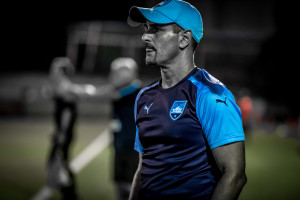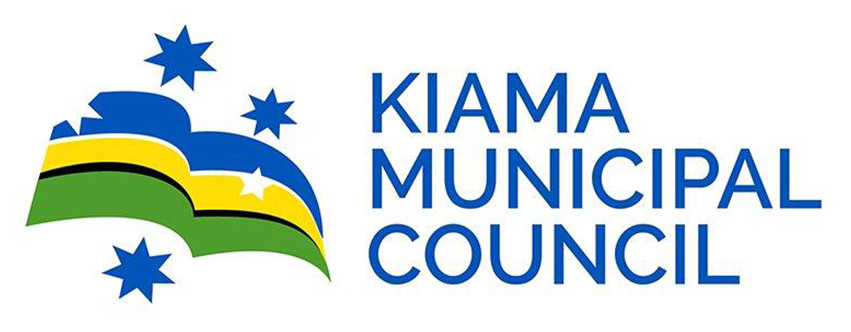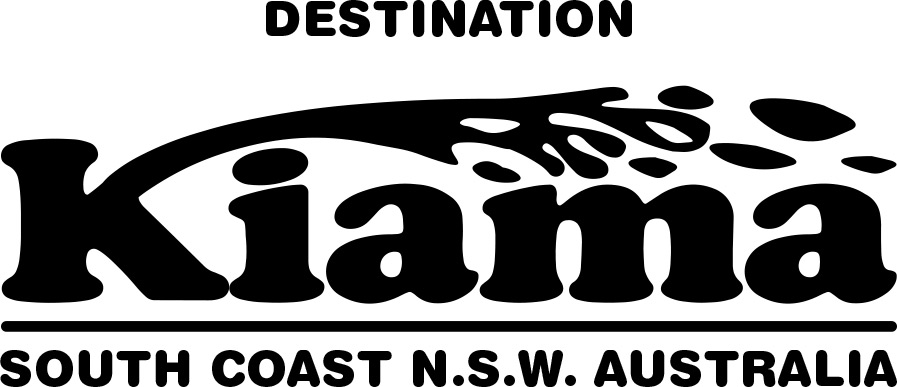Robbie Stanton, the former Sydney United, Marconi and Wollongong Wolves midfield journeyman, took up his first major appointment as a coach at Sutherland Sharks in 2007 where he achieved considerable success before accepting the challenge at Sydney FC as youth coach in 2015.
Stanton is looking to improve on last year’s eleventh position in NPL 1 this season and is drawing on all his experience and resources in the professional game to reach a respectable position in the League.
However, he is well aware that it is one thing to develop young players, and another to produce results in a highly competitive senior League.
In this interview with Roger Sleeman, Robbie Stanton discusses his early career in football, his coaching experiences, and life at Sydney FC in his development role and as coach of the club in NPL 1.
ROGER SLEEMAN
Where did it all begin?
ROBBIE STANTON
I first kicked a ball at my local junior club, Greystanes, and by my early teens, I was selected in the Blacktown Academy where I met well known future stars, Brad Maloney and John Crawley.
While I was at Blacktown, I was selected to play at state team level throughout my youth league career.
In 1988, I experienced the trip of a lifetime when the Blacktown head coach, Alan Vessey, recommended me to travel to Queens Park Rangers under the Big Brother Scheme.
I was living a dream when I met and trained with football aristocrats, Les Ferdinand, Paul Parker, Mark Falco, Terry Fenwick and David Seaman.
The club wanted to sign me as an apprentice but I couldn’t satisfy visa requirements so I had to return to Australia after the best six weeks of my football life at that time.
R.S.
You were selected to attend the AIS on your return from QPR in 1989, and subsequently signed by Sydney United to play NSL football in 1990.
What thoughts were passing through your mind?
RST.
For a local kid from Greystanes to make the grade in senior football was vindication of all the hard work and ambition I had applied in my early years.
I rubbed shoulders at the AIS with players of the calibre of Brad Maloney, Steve Corica, Kris Trajanovski, Frank Talia, Sean Cranney and Kevin Muscat.
R.S.
You were part of one of the greatest Australian youth teams when you were selected for the 1991 u/20 squad which played in Portugal.
Can you recall that experience?
RST.
It was a squad of stars with Okon, Corica, Kalac, Schwarzer, Bosnich, Muscat, Maloney, Seal, Kindtner, Mark Babic, Poric, Bingley, Popovic and Silic who all succeeded at the highest level either overseas or in Australia.
Before the series, Raul Blanco told the players not to be surprised if we made the semi-finals and with the other coach, Les Scheinflug, a strong cohesion was built between the players, as well as mental toughness which we took into the tournament.
Fortunately, we won our group and I was fortunate to score in a penalty shootout in the quarter finals against Syria.
We entered the semi–final against Portugal with great belief and the noise of the 115,000 crowd was so deafening you couldn’t speak a word to anybody because they couldn’t here you.
When you consider they had future world stars in Rui Costa and Luis Figo, the 1-0 loss via a Rui Costa thunderbolt which Bosnich could only watch soar into his top right hand corner, was a sterling performance.
R.S.
You were a buzzing, attacking midfielder with pace, a great shot and an ability to open up defences.
Why weren’t you ever capped for the Socceroos?
RST
To be honest there were a lot of better players than me and perhaps I overachieved by playing 330 NSL matches.
Players like Zelic, Okon and Trimboli were stars in their own time and the production line was at full capacity.
Also, there weren’t as many internationals played at the time which limited the chance for fringe players like me to be capped.
R.S.
You first entered coaching in 2007 at Sutherland.
How did those seven years at the club contribute to your coaching journey?
RST
I first worked under Ron Corry and after he left, Paul Smith encouraged me to take over the senior coaching role.
We reached three Waratah Cup finals and final playoffs, the grandfinal in my first year and just missed winning the League title in one year.
I owe a lot to Paul Smith who continually supported me in gaining the experience which was required to achieve success and take my coaching ability to the next level.
R.S.
You’ve been coaching in the Sydney F.C. youth system since 2015.
Is it working, because so few players are coming through to play A-League for Sydney F.C, unlike in your day when the NSL was churning out young players from the youth team?
RST
This is a difficult problem because A- League clubs have a winning culture.
Development is good but the opportunities are scarce when you haven’t got enough teams in the League and the bar for young players to make the grade is much higher.
Sydney FC is experiencing a golden era with the four star imported players but in my development area we are trying to make it impossible for young players not to progress to A- League.
They have the perfect platform playing in NPL 1 which is a good level of football to springboard their careers.
R.S.
What is your view of your NPL squad performances this season?
RST
I’m happy with the results apart from the recent loss to League leaders, Apia, where we lost our shape for a five minute period to concede two late goals in the first half.
We were unfortunate in the last round to concede a late goal against Manly to lose 2-1 but we certainly held our own against last year’s champions.
Although, we’re sitting in 12th position, we‘ve been more than competitive in most games and it’s just a matter of limiting the error count.
Remember, these boys are eighteen and nineteen year olds playing against seasoned campaigners so they have to learn to win.
In training we don’t compromise on playing style and implement a lot of what Graham Arnold has done with the first team so if they get their chance to play in the A-League, it won’t be foreign to them.
R.S.
Can you outline your preferred playing style and preparation for the competitive season?
RST
The game is based on effective possession but I emphasise using the ball to the best advantage so if an early ball is an option, I encourage it.
We also like to move the opposition round by using the space on the flanks or anywhere we have numerical advantage and get into areas where we can create scoring chances through a high tempo game.
Goalscoring hasn’t been our problem this season so we just have to be more disciplined when we don’t have the ball and the results will improve.
As far as preparation is concerned we’re privileged to have the services of Andrew Clarke, an accomplished sport scientist, who had a long professional playing career.
He worked wonders with Central Coast and also in his time at Sydney FC.
The measurement of players’ performance is a science in itself when you look at the amount of sprints a player does and recovery rate, maximum heart rate and distance covered.
As a result there are less injuries, maximum output, quicker recovery and turnaround which are highlights of the modern game.
R.S.
What is your overall opinion of the state of the NPL?
RST
The NPL is a tough competition and with relegation, coaches are under severe pressure every week.
For most clubs there are restrictions because of work and study commitments.
We train four mornings a week from 7.30-9.30 a.m. so we’re lucky because other clubs have to train at night after players have been working. Consequently, coaches have to be clear in their aims.
From my standpoint, having players all under twenty is a challenge, particularly when financial rewards are emphasised less than development opportunity.
However, the standard of football is very high in NPL and the competition still promotes that tribal rivalry.
R.S.
What are your long term ambitions in coaching?
RST.
All coaches want to remain at the top level but I never put a clock on it.
I continue to strive to be the best in my role and hopefully that will always keep me in good stead.
When I played, I always knew I would coach to provide a different perspective of the game.
I also want to broaden my knowledge by continual education and always familiarise myself with best practice in world football.
Whether I’m involved in development, the NPL or the A-League in the future, I consider myself extremely fortunate to be employed fulltime by Sydney FC at this point in time.




